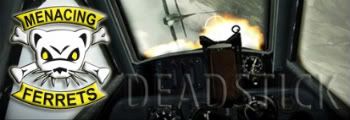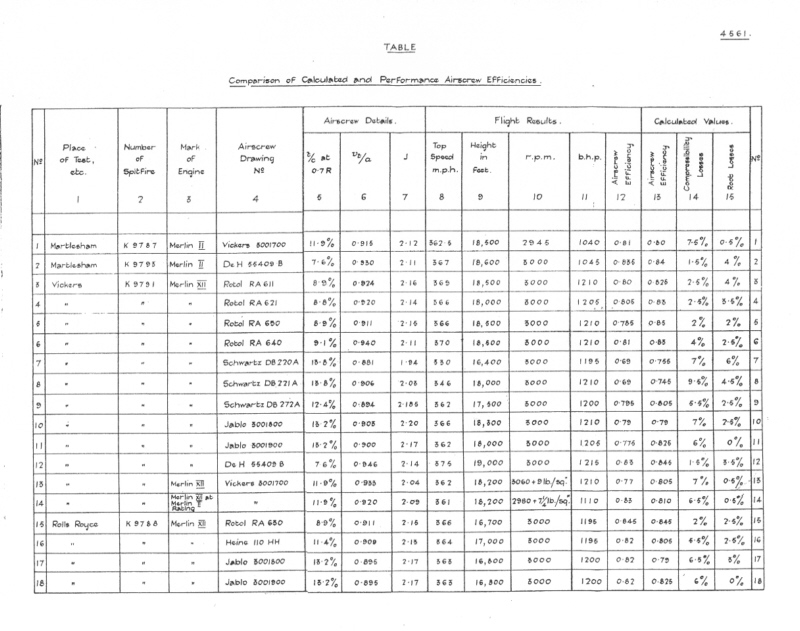
 |
|
#31
|
||||
|
||||
|
Hahaha, more Spitfans complaining because it is not über like in IL 2.
Actually, even though I mainly fly Blue, I agree. I found this in a nother thread : Quote:
__________________

Last edited by Deadstick; 04-10-2011 at 12:30 AM. |
|
#32
|
|||
|
|||
|
Well after some more testing of the Mk IIa I must say it is modelled perfectly on a real +12 lbs boost Spitfire Mk IIa for top speeds.
These numbers are taken at full CEM and engine overheat enabled. *Warning* Disabling CEM or overheat results in a Spitfire Mk IIa capable of 390MPH. Do not use CEM or overheat OFF for speed testing.  As can be seen the Mk IIa speeds are spot on when compared to a +12 lbs boost Spitfire Mk Ia. The speeds are around 20-25mph faster than the 9 Lbs boost Mk II a speeds which would put them about right for 12 lbs boost. Also at the full throttle height of around 18,000 ft the boost there should be no speed difference between 9 lbs or 12 lbs boost. The Mk IIa in CoD (at least in speed for altitude) is definately a 12 lbs boost version. The guage in CoD is broken. I will add climb tests later. |
|
#33
|
|||
|
|||
|
Quote:
Perhaps the props data/size is wrong if this is incorrect here? Food for thought. Last edited by Peril; 04-10-2011 at 11:27 AM. |
|
#34
|
|||
|
|||
|
Can you tell me how I get the 317 at SL in COD with CEM? My procedure is:
All out (max rpm, max boost with boost cut out) then trim aircraft. Optimize rpm (slightly lower seems to improve speed), let it settle, retrim aircraft, then close radiator just as much to stay at water temperature still acceptable (120°C). Retrim if necessary. I only get 300 mph at sea level. And this with several trials. |
|
#35
|
|||
|
|||
|
41Sqn_Stormcrow,
Make sure you use the no cockpit view. The internal speed guage jumps aroung quite a bit and the little info box only shows increments of 10. So if you use the info box (move your mouse over the instruments) your speed might be showing a 300 but in reality it could be 309. My top speed has ranged from 311 to 317, there doesn't seem to be any reason for the difference apart from my varing flying skills I open the radiator 5 or 6 clicks from fully closed for optimum cooling and speed. I am not sure if it is modelled in CoD but the real Spitfires would give slightly better speeds with the radiators slightly open. This position was known as the minimum drag position and was marked by a red or white triangle on the map box beside the radiator lever. Open the radiator further than the triangle and the increased drag would slow the aircraft down. Close the radiator further back from the read triangle and the decreased cooling would cause the engine to overheat, thus requiring a reduction in power. Unfortunately the CoD Spitfire has the radiator lever slightly forward from the correct position so it wouldn't line up with this red triangle even if it did exist on the CoD Spitfire. |
|
#36
|
|||
|
|||
|
Quote:

|
|
#37
|
|||
|
|||
|
The Engine instruments in game are animations that "represent" engine performance. This is separate to the actual achieved performance by careful flight test. In addition it was at the time standard to have only +8Lb Boost guage even though the Merlin XII was using +9lbs regularly, the same goes for use of Boost Cutout. In this case if below the +12Lbs FTH then all you are going to see is full scale Boost deflection.
The flight testing I have done indicates the Spit MKII is actually performing pretty close to the real world numbers, though Boost figures are obviously wrong, but recall these are animations so easily fixed. So I agree with ICDP it represents +12lb performance. MKII, CEM On , Overheat off, 100% Fuel, Max throttle, RPM Full fine 3000 controlling Climb Speed 160-165MPH as per RAE Climb test RAE Figures in [ ], ROTOL CS 0-5000ft 1:42min, Boost +5.5 [1:42] 0-1000ft 3:23min, Boost +5.5 [3:24] 0-15000ft 4:58min, Boost +5.0 [5:00] 0-18000ft 6:09min, Boost +2.5 [6:06] In Game FTH is around 14,500ft Vmax in game 280MPH IAS, 358TAS , [350TAS] Vmax Sea Level 280MPH IAS [290] Climb methodology used: Start at Sea level about 30MPH below desired climb speed. Select Power and Prop as required About 15MPH below desired climb speed smoothly pitch to the required attitude and start the clock Spedd held +-5mph to the schedule. Last edited by IvanK; 04-11-2011 at 12:18 AM. |
|
#38
|
|||
|
|||
|
Quote:
|
|
#39
|
|||
|
|||
|
Point 1 yes agree but thats as I flew the test on the day.
Point 2 Yes aware of that, there is a pretty reasonable chart of this in the AP2095 Point 3 No PEC as I don't think (but will confirm) its modelled in the game (No in game data) Point 4 Not yet |
|
#40
|
|||
|
|||
|
Quote:
I've been trying to replicate your test with overheat enabled, and the results are somewhat "interesting". Even if I climb somewhat fast and open the radiator all the way, there's quite a high probability of something breaking by the time the aeroplane gets to 15000' indicated. I am using the free flight over the channel QM. It isn't a standard day; setting 1013 millibars on the altimeter and then flying suicidally low & slow results in an indicated altitude of 500 feet. The standard guess of 30'/mb gives QNH of 996 mb, which checks out in the sim. I don't know how to work out OAT or humidity to perform a density altitude calculation, and at this stage I also don't know whether the ambient pressure is global or local. I was planning to test this by flying low over the sea in the south-west and north-east corners of the map, but that's a long way to fly in a Spitfire, especially given the problems with setting cruise power correctly. Come to think of it, I should probably copy some of this stuff over to my flight testing thread at some point... Interestingly, the "no cockpit" altimeter displays true altitude above the sea "out of the box". Likewise, the "no cockpit compass" displays true heading, whilst the compass in the aeroplane appears to suffer from quite a lot of magnetic variation (almost 20 degrees West; I was expecting more like 10 for 1940, though it's really hard to read the compass in 720p resolution...). [There is no compass card in the cockpit, so I assume that the difference between indicated and must be entirely due to magnetic variation.] Looking at the engine exhaust, it seems that we only get a sensible mixture at sea level, and the sim doesn't understand auto rich & auto lean. Negative g rich cut also seems to get worse at higher altitudes, which would support this hypothesis. I also note with interest that leaning the mixture affects the boost pressure, which I don't understand... |
 |
|
|